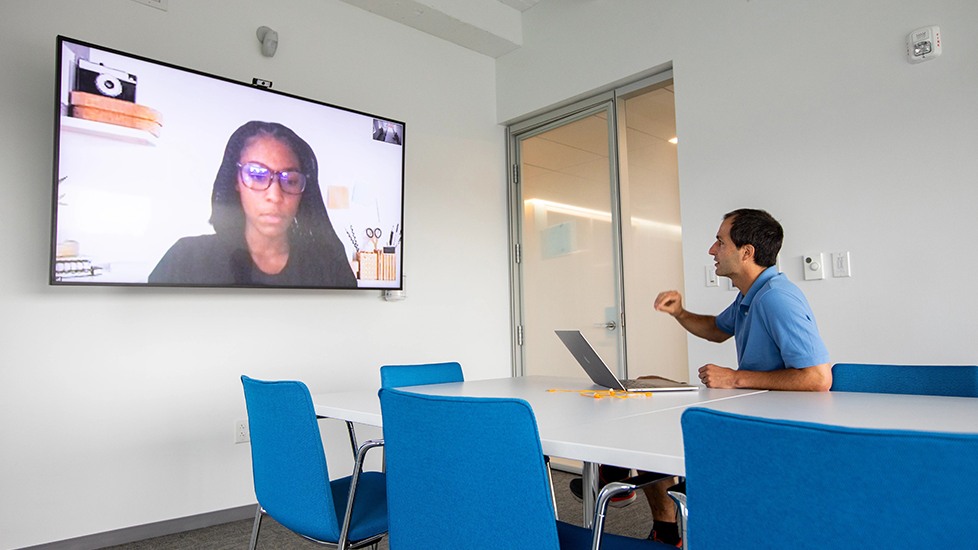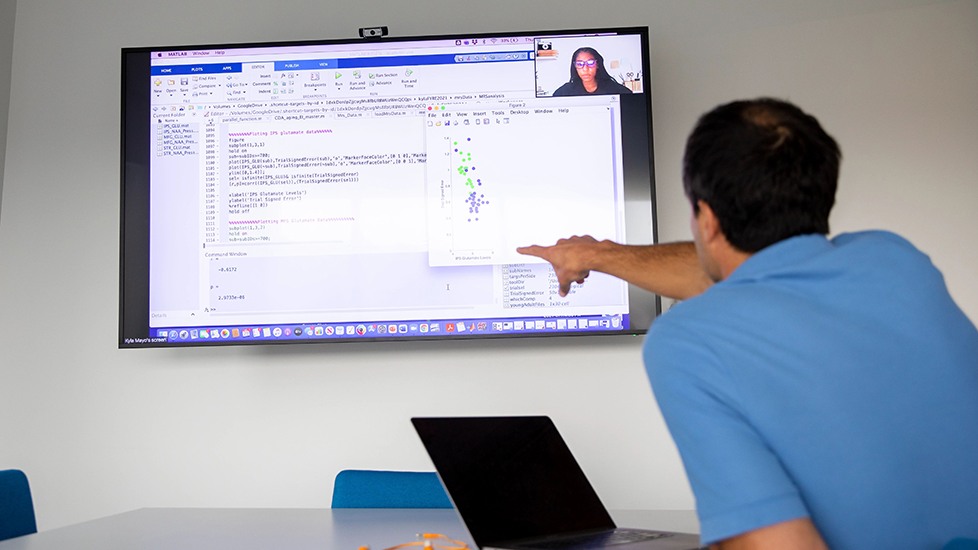PROVIDENCE, R.I. [Brown University] — Selene Schiavone-Chamorro, a rising sophomore studying biology at the University of Puerto Rico, has long been intrigued by the mysteries of the human mind. When she was offered a research opportunity in computational brain science at Brown University this summer, she jumped at the chance to learn how mathematical tools and theories can be used to better understand brain function.
Schiavone-Chamorro is conducting research on the cognitive mechanisms behind gambling addictions. She is using the programming platform MATLAB, a tool well-known to computational neuroscientists, to track the behaviors of compulsive gamblers. The goal, she said, is to determine if individuals with gambling disorders are influenced by the illusion of control and the amount of reward they receive.
“I have been using everything I learned in the MATLAB bootcamp during the first two weeks of the program to analyze the data we have gathered from a slot machine experiment,” said Schiavone-Chamorro, who hopes to pursue an M.D./Ph.D. degree in neuroscience after completing her bachelor’s degree. “We are now developing a series of graphs to see if there is correlation between certain elements, such as in a participant’s decision to gamble or not to gamble, and their bet size.”
Schiavone-Chamorro is one of 10 students participating in Carney Summer Scholars, a nine-week program organized by Brown’s Carney Institute for Brain Science that offers hands-on training in computational brain science to students from historically underrepresented groups who are enrolled at universities across the United States. Students are recruited through the Summer Research Early Identification Program at the Brown-based Leadership Alliance and placed in computational laboratories at Brown.
Carney Institute director Diane Lipscombe said the summer scholars program emphasizes the importance of engaging a diverse and talented cohort of students in research.
“Innovation and discovery depend on recruiting motivated students with high potential,” Lipscombe said. “The emerging field of computational brain science combines two very exciting disciplines and both attract incredibly talented students. Through the summer program, students can learn the science behind developing testable hypotheses about brain function in health and disease.”

